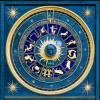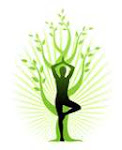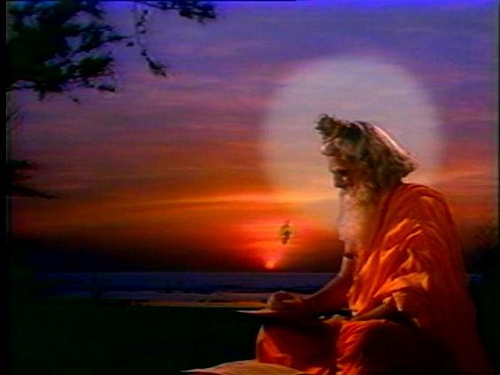Introduction
Mathematics, science and technology of ancient India covered many major branches of human knowledge and activities, including physics, astronomy, metallurgy, medical science and surgery, fine arts, civil engineering and architecture, shipbuilding and navigation. According to the 19th century British historian Grant Duff, “Many of the advances in the mathematics and sciences that we consider today to have been made in Europe were in fact made in India centuries ago.” But how much do we all know about it? Such investigation to understand Indian contribution to mathematics, art and architecture, reveals very interesting facts that are the origin of today’s modern world.
Evolution of Mathematics
Mathematics has been considered to be a very important subject since ancient times. We find very elaborate proof of this in the Vedas (which were compiled around 6000 BCE). The concepts of division, addition, concepts of zero and the infinite etc. were used even at that time. We also find roots of algebra in Vedas. People from Arab and other countries used to travel to India for commerce. While doing commerce, they also learnt the easy-to-use calculation methods of India. Through them this knowledge reached Europe. From time to time many inquisitive foreigners who visited India delivered this matchless knowledge to their countries. It is not an exaggeration to say that till 12th century India was the World Guru in the area of Mathematics. The auspicious beginning on Indian Mathematics is in Aadi Granth (ancient/eternal book) Rigved.
Concept of Zero
Most ancient civilizations had no symbol for zero in their number systems because they did not need it. Zero was introduced in the West as late as the beginning of the thirteenth century. Modern society takes the invention of the zero for granted, yet, the Zero is a non-trivial concept that allowed major mathematical breakthroughs. The zero symbol that we now use came from India centuries ago. The Arabs, who learned about it from the mathematicians of India during their travels, introduced it to the rest of the world.
The Decimal System in Harappa
The famous French mathematician, Laplace, said, “The ingenious method of expressing every possible number using a set of ten symbols (each symbol having a place value and an absolute value) emerged in India.” In India a decimal system was already in place during the Harappan period as indicated by an analysis of the Harappan weights and measures. Weights corresponding to ratios of 0.05, 0.1, 0.2, 0.5, 1, 2, 5, 10, 20, 50, 100, 200, and 500 have been identified, as have scales with decimal divisions. A particularly notable characteristic of Harappan weights and measures is their remarkable accuracy. A bronze rod marked in units of 0.367 inches points to the degree of precision demanded in those times. Such scales were particularly important in ensuring proper implementation of town planning rules that required roads of fixed widths to run at right angles to each other, for drains to be constructed of precise measurements, and for homes to be constructed according to specified guidelines.
Mathematical Activity in the Vedic Period
Records of mathematical activity in the Vedic period are mostly to be found in Vedic texts associated with ritual activities. However, as in many other early agricultural civilizations, the study of arithmetic and geometry was also impelled by secular considerations. Thus, to some extent, early mathematical developments in India mirrored the developments in Egypt, Babylon and China.
The system of land grants and agricultural tax assessments required accurate measurement of cultivated areas. In order to ensure that all cultivators had equivalent amounts of irrigated and non-irrigated lands and tracts of equivalent fertility - individual farmers in a village often had their holdings broken up in several parcels to ensure fairness. Since plots could not all be of the same shape - local administrators were required to convert rectangular plots or triangular plots to squares of equivalent sizes and so on. Tax assessments were based on fixed proportions of annual or seasonal crop incomes, but could be adjusted upwards or downwards based on a variety of factors. This meant that an understanding of geometry and arithmetic was virtually essential for revenue administrators. Mathematics was thus brought into the service of both the secular and the ritual domains.
Arithmetic Operation and Geometry
Arithmetic operations (Ganit) such as addition, subtraction, multiplication, fractions, squares, cubes and roots are enumerated in the Narad Vishnu Purana attributed to Veda Vyasa (pre-1000 BC). Baudhayana’s Sutra displays an understanding of basic geometric shapes and techniques of converting one geometric shape (such as a rectangle) to another of equivalent (or multiple, or fractional) area (such as a square).
Pingala’s Binary number system
Pingala presents the first known description of a binary numeral system. He described the binary numeral system in connection with the listing of Vedic meters with short and long syllables. The use of zero is sometimes mistakenly ascribed to Pingala due to his discussion of binary numbers, usually represented using 0 and 1 in modern discussion, while Pingala used short and long syllables. Four short syllables (binary “0000″) in Pingala’s system, however, represented the number one, not zero. ? and ? or, ? and ? for heavy (guru) and light (laghu) (long and short). He also contributed to the binomial theorem and his work also contains the basic ideas of Fibonacci number (called maatraameru ).
Aryabhata Sutra for ‘PI’
Mathematics played a vital role in Aryabhata’s revolutionary understanding of the solar system. His calculations on pi, the circumference of the earth (62832 miles) and the length of the solar year (within about 13 minutes of the modern calculation) were remarkably close approximations. His shloka explains as below:
“chaturadhikaM shatamaShTaguNaM
dvAShaShTistathA sahasrANAm
AyutadvayaviShkambhasyAsanno
vr^ttapariNahaH.”
The above shloka’s meaning is: Add 4 to 100, multiply by 8 and add to 62,000. This is approximately the circumference of a circle whose diameter is 20,000. i.e. PI = 62,832 / 20,000 = 3.1416
In making such calculations, Aryabhatta had to solve several mathematical problems that had not been addressed before, including problems in algebra (beej-ganit) and trigonometry (trikonmiti).
Pythogoras Theorem
Pythagoras - the Greek mathematician and philosopher who lived in the 6th century BCE was familiar with the Upanishads and learnt his basic geometry from the Sulva Sutras.
“The square of the hypotenuse of a right angle triangle is equal to the sum of the squares of the
other two sides” is a — Pythagorean Theorem (6th century BCE)
An early statement of the Pythagoras theorem was found in Baudhayana’s Sutra: The chord which is stretched across the diagonal of a square produces an area of double the size. His Sutra also contains geometric solutions of a linear equation in a single unknown.
Panini’s Algorithmic Grammar and Formal Scientific Notation
An important development in the history of Indian science that had a profound impact on all mathematical findings that followed was the pioneering work by Panini (6th C BC) in the field of Sanskrit grammar and linguistics. Panini provided formal production rules and definitions describing Sanskrit grammar and phonics.
Basic elements such as vowels and consonants, parts of speech such as nouns and verbs were placed in classes. The construction of compound words and sentences was elaborated through ordered rules operating on underlying structures in a manner similar to formal language theory. Today, Panini’s constructions can also be seen as comparable to modern definitions of a mathematical function.
Vedic Mathematics
Vedic Mathematics is the name given to the ancient system of Mathematics, which was rediscovered from the Vedas between 1911 and 1918 by Sri Bharati Krsna Tirthaji (1884-1960). According to his research, all of mathematics is based on sixteen Sutras or word-formulae. For example, ‘Vertically and Crosswise’ is one of these Sutras. These formulae describe the way the mind naturally works and are therefore a great help in directing the student to the appropriate method of solution.
Perhaps the most important feature of the Vedic system is its coherence. The whole system is beautifully interrelated and unified: the general multiplication method, for example, is easily reversed to allow one-line divisions and the simple squaring method can be reversed to give one-line square roots. These methods are all can be easily understood that makes mathematics easy, enjoyable and encourages innovation. The simplicity of Vedic Mathematics means that calculations can be carried out mentally.
Example of Vedic math simplicity for finding a square of any number:
a) Observe these examples: We get our answer by merely knowing how much is 100 less 97. Knowing that the deficiency is 3, we merely lessen 97 by 3 and then we tag on the squaring of that 3. As a one-line answer, the setting out would appear as thus:
97 Squared = 97 - 3 / 3×3 = 94 / 09 Answer is 9409
96 Squared = 96 - 4 / 4×4 = 92 / 16. Answer is 9216
b)When the number being squared is above the base, of 100 here, we add the Excess and Square the Excess:
104 Squared = 104 + 4 / 4×4 = 108 / 16 = 10, 816
104 x 105 = 104 + 5 / 4×5 = 109 / 20 = 10, 920
c) What if we enlarged our numbers to 998 Squared?
It is close to 1,000 so we say Base 1,000 and know to have 3 zeroes on the right hand side of the ( / ).
998 Squared = 998 – 2 / 2×2 = 996 / _ _ 4 = 996 / 004. = 996,004 Understanding this, you can be calculating digits in the millions: 9998 Squared = 9998 – 2 / 2×2 = 9996 / _ _ _ 4
(Since we are in Base 10,000 the 4 Zeroes determine the need for 4 digits after the ( / ). = 9996 / 0004 = 99,960,004.
Interest in the Vedic system is growing in education where mathematics teachers are looking for something better and finding that the Vedic system is the answer. Research is being carried out in many areas including the effects of learning Vedic Maths on children; developing new, powerful but easy applications of the Vedic Sutras in geometry, calculus, computing etc.
Article by Soumya Murag
Age 15
soumyamurag@gmail.com
Sophomore, Monta Vista High School, Cupertino, CA
Active participant of Cupertino, CA, USA Shakha.





